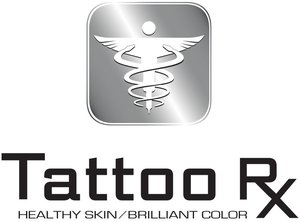Infected Tattoo
Tattoos inherently come with risk of infection which is a serious condition for the client and for the professional artist. Infection can range from a simple pimple to limb or life threatening.
According to WebMD the most effective way of treating tattoo infection is by avoiding infection in the first place. The best way to accomplish this is by using a combination antibacterial and anti-fungal ointment during the application of the tattoo. Also, provide coverage of the tattoo upon completion and recommend new non-stick bandage and ointment changes every eight hours.
Once the tattoo has been applied, immediately cover the tattoos with additional antibacterial and anti-fungal ointment and a fresh non-stick bandage. This will assure bacteria will not create an infection to the fresh open tattoo. Four hours after tattoo application the client should rinse the tattoos with warm water to remove excess ink, blood and product. No form of soup or astringent should be used at this point. Pat-dry the tattoos with a clean cloth and immediately apply antibacterial and anti-fungal solution and cover with a new non-stick bandage.
During the healing process the use of pure cold press Aloe Vera has been found to significantly speed the wound healing time. The use of Lidocaine during the tattoo application can significantly reduce pain and twitching or surprise movements from clients. Lidocaine will assist in pain relief from burning and stinging sensations and keep the client from scratching the tattoo in later stages of healing. This rinse and cover process should happen at least two to three times daily and prior to the wound having a chance to "dry out" or scab between changes. After each process the tattoo should be covered with a fresh new non-stick bandage to protect from sunlight and potential airborne bacteria.
The key to wound healing and maximum color retention is proper care and time. Once the tattoo wound has closed, soap may be used. Look for Sulfate Free soap in order to increase tattoo color retention. As always, stay out of the sun and do not submerge the tattoo under water until the area is fully healed. The tattoo may be rinsed however, not submerged for longer then a minute at a time. This will assure maximum color retention during the healing process.
There are several new products on the market that can provide the proper wound healing and allow your professional tattoo studio the ability to protect your most important assets, your clients. Tattoo RX offers the most extensive tattoo care with tattoo application, post tattoo healing and long term tattoo care. The use of drug store healing products can be used however, you will want to make sure the products are not petrolatum based as these products tend to degrade the tattoo color. Look for ingredient definitions and usage in the next issue of "Tattoo Industry Insider" Newsletter.
Click the link below to sign up for a monthly copy of our industry Newsletter delivered direct to your inbox. This newsletter is simply straight industry talk without advertising or marketing. Its free and helpful industry information every professional artist can benefit from.
Anthony S Case
